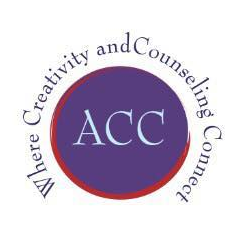Staying Connected and Current
It can be challenging to balance multiple roles in life. It can seem impossible to give each role and responsibility the required or desired attention. This last week was especially challenging for me.
Last week was one week before school finals. The Mindful Doodle Workshop was set to release. We were preparing for a family visit. My private practice was booked full with clients. I was looking forward to the Association for Creativity in Counseling’s (ACC) annual conference. Then, I got sick and ended up in the hospital. (I am home and doing better now).
Life happens, and we need to disconnect.
Life happens, and we lose track of time. This past week I was reminded that disconnection is essential. This past week also reminded me that staying connected and current is not only important but inspiring. After spending ten days doing the bare minimum, I knew it was not just my physical health that would require rest and healing.
While my health (and poor hospital internet) prevented me from attending the entire virtual ACC conference, it was refreshing to rest and recover by listening to other creative professionals and students share on various topics. It reminded me that staying connected and current professionally is necessary for client care and continued professional development.
I have been focused on counseling advocacy and leadership for the last few months. Time is a barrier to engaging in advocacy efforts or taking on leadership positions. I have shifted my perspective and now see staying connected and current as of the expectations. Staying current and connected, to any degree, allows us to maintain our involvement, even when disconnection for mental, physical, or spiritual health is necessary.
Ways to Stay Connected and Current That Require Minimal Effort
1. Social Media
follow or friend organizations or individuals that share content that helps keep you current in your profession
Send a direct message or e-mail to someone that inspires you that you find on social media. You may not hear back from them, or you may open the door to a beautiful connection.
2. Professional Organizations
Become a member of a large and or ‘niched’ professional organization. Many organizations cost money, so a financial commitment is required for ongoing connection; however, you decide how you engage with what the organization offers.
Membership opens the door to networking and connection, keeping you current with research and making you aware of future possibilities. Remember, it is okay that you cannot commit to something more today, but maybe you can in a few months or years.
3. E-Mail Newsletters
Subscribe to e-mail newsletters that may contain information that you are passionate about. This can make an e-mail overwhelming, but it is also easy to have information come directly to you. There is no rule to read consume the information when received.
4. New Research
Consume new research articles or article summaries to maintain current with the literature.
One of my favorite apps is Researcher: Discover & Discuss. Among other features for connection, you can select the topics you are interested in and the journals you would like to follow. Then, like a social media feed or news headlines, you can scroll through recently published research
5. Passive consumption
Read books or listen to podcasts. Whatever form of content consumption is most appealing, take it in. I am an active reader and listener. I take notes when I consume information. I make a point to allow for passive consumption where I can just take it in. This often happens while driving or showering.



